Magpie Inkcap
Poisonous causing alarming symptoms but not affecting everybody. Don’t take a chance!
| Mushroom Type | |
| Common Names | Magpie Inkcap (EN), Magpie Fungus, Cap Inc Du a Gwyn (CY), Czernidłak pstry (PL), Harkálytintagomba (HU) |
| Scientific Name | Coprinopsis picacea |
| Synonyms | Coprinus picaceus |
| Season Start | Sep |
| Season End | Dec |
| Average Mushroom height (CM) | 7-10 |
| Average Cap width (CM) | 5-7 |
Cap
5-7 cm. Elongated finger-like shape opening to a cone. Appearing white and shaggy with a black background turning brown/grey to black and then ‘melting’ or deliquescing.
Gills
Gills white turning pink to grey to brown until becoming black and ‘melting’. Crowded and free of the stem.
Stem
7-10 cm long, 0.4-1.2 cm diameter. White, narrow, usually hollow and with a white movable skirt that is low down on the stem and quite often missing. Can have a slightly hairy bulbous base.
Possible Confusion
The Shaggy Inkcap (Coprinus comatus), pictured, has a white cap with white scales, the Magpie Inkcap has a black cap with white scales.
Spore Print
Black. Ellipsoid.
Frequency
Uncommon.
Other Facts
The resulting mess from leaving this mushroom to deliquesce can be used as a viable ink.

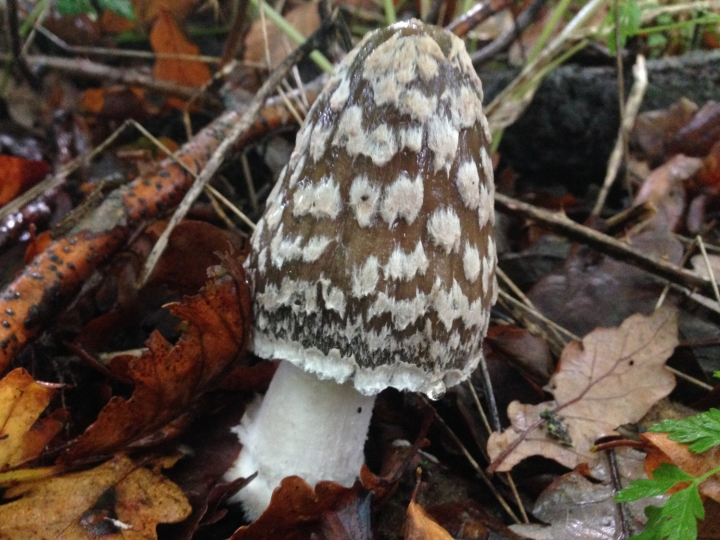















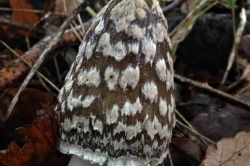
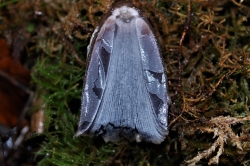
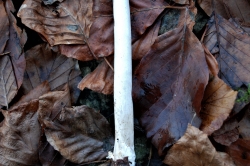
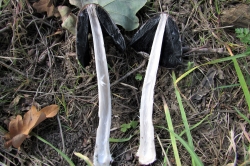
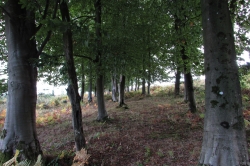
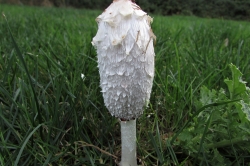




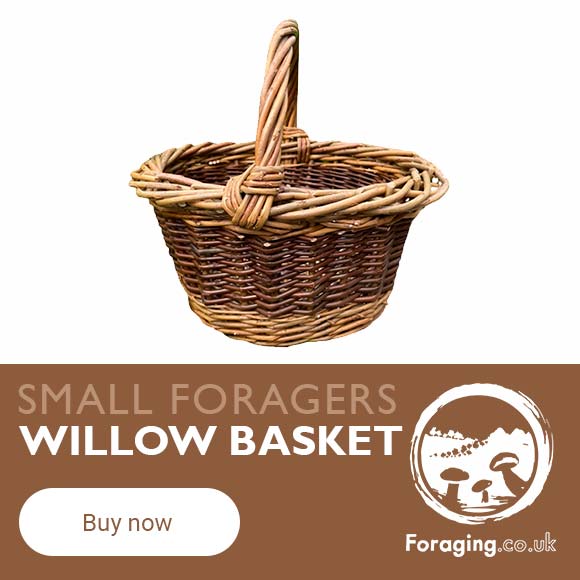

24 comments for Magpie Inkcap
Found a group of these in Dartington Hall gardens – not sure how to upload picture.
Hi Dave, you can send them to us here https://www.wildfooduk.com/contact-us/ or via email to [email protected]
An enormous patch of them still looking good in Dartington Hall. Rather an unusual location as these are normally associated with alkaline substrates and usually but not exclusively with beech. These are almost certainly associated with yew.
found these at pressmenan lake _MG_2790.jpg
Found one of these today at Christmas Common in Oxfordshire
A new one for us. Spotted them at Wisley Gardens yesterday 8.9.2020
Found a group of these yesterday in Dulwich Park, south London.
Found in Hockley Woods, Essex this morning
Growing on our garden for the first time. We live on the edge of woodland south of Canterbury.
I saw a patch of about 6 in Westonbirt Arboretum. I’ve never seen one before.
Spotted one in Blake’s Wood, Little Baddow, Essex, yesterday 30/10/2020
Found several of these at Malshanger near Basingstoke, never seen one before. Under a Beech tree which apparently they like.
A few seen today at Coopers Hill south of Cheltenham, a beach forest on iron age hillfort.
Like Sheila Compton saw several under a beech tree at Malshanger, near Basingstoke. Under same tree, puffballs and another fungi species I didn’t know the name off.
Saw two Magpie fungi on North Wessex Downs (Cake Wood) October 2021. Impressive.
Found several of these under oak trees in the garden where we sometimes have logs delivered, hence the rotting wood particles in the area.
Found 2 in Browns wood in Bedford today.
Found on today in No Dragon Wood, SW Herts
Saw today in Sulham Woods, Tilehurst, Reading.
Found three today at Whiteleaf in Buckinghamshire. I took pictures too if you show me how to upload them.
Found three at the Arundel Wetlands on 27th October.
A rather spectacular solitary specimen in South Norfolk in a pile of woodchip. Have a picture if someone can explain how/where to upload.
You can send photos to [email protected]
Found 29/10/23 Credenhill Woods, Herefordshire, site of Iron Age hill fort. Can supply photos if wanted